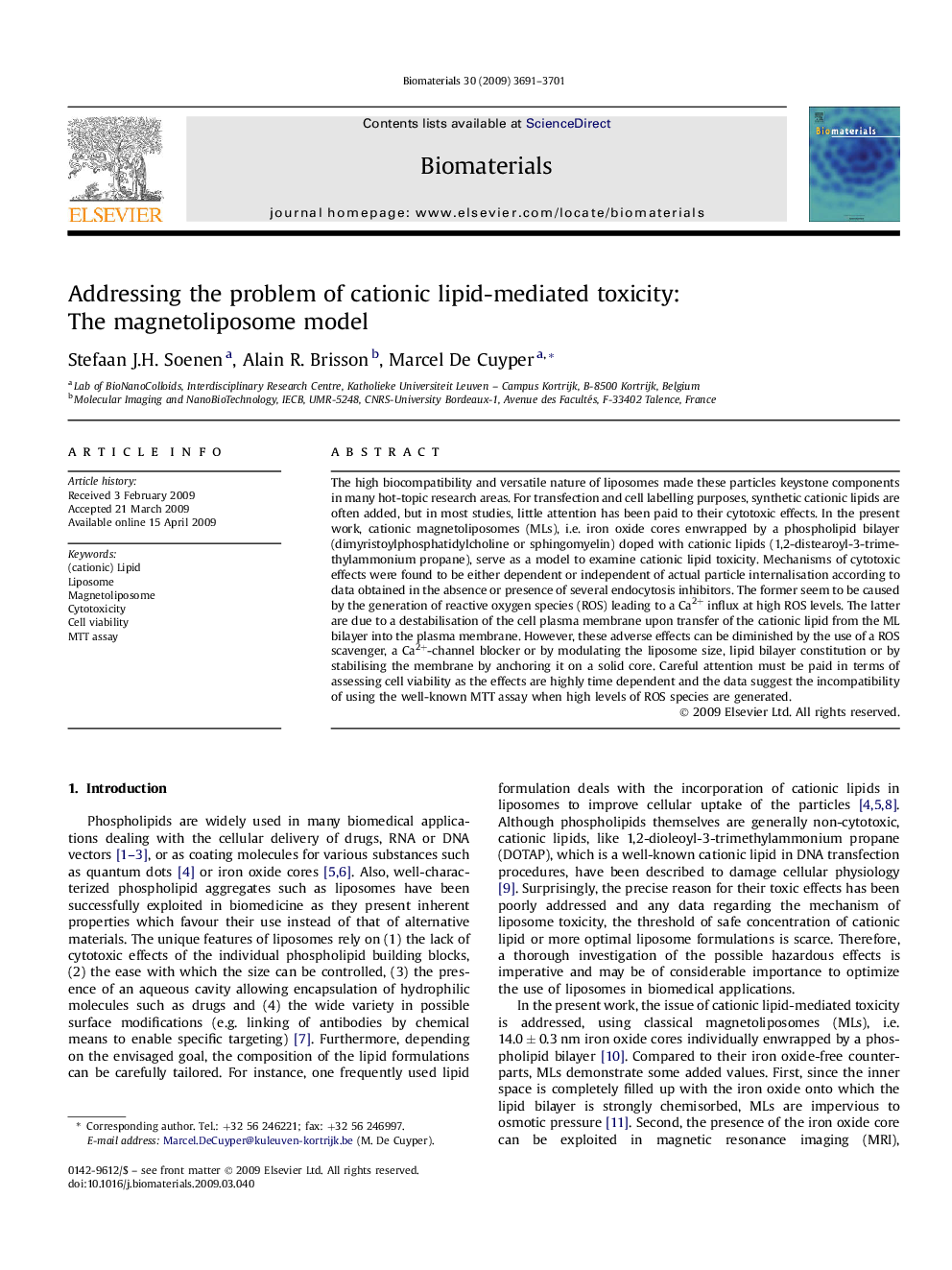| کد مقاله | کد نشریه | سال انتشار | مقاله انگلیسی | نسخه تمام متن |
|---|---|---|---|---|
| 9199 | 620 | 2009 | 11 صفحه PDF | دانلود رایگان |

The high biocompatibility and versatile nature of liposomes made these particles keystone components in many hot-topic research areas. For transfection and cell labelling purposes, synthetic cationic lipids are often added, but in most studies, little attention has been paid to their cytotoxic effects. In the present work, cationic magnetoliposomes (MLs), i.e. iron oxide cores enwrapped by a phospholipid bilayer (dimyristoylphosphatidylcholine or sphingomyelin) doped with cationic lipids (1,2-distearoyl-3-trimethylammonium propane), serve as a model to examine cationic lipid toxicity. Mechanisms of cytotoxic effects were found to be either dependent or independent of actual particle internalisation according to data obtained in the absence or presence of several endocytosis inhibitors. The former seem to be caused by the generation of reactive oxygen species (ROS) leading to a Ca2+ influx at high ROS levels. The latter are due to a destabilisation of the cell plasma membrane upon transfer of the cationic lipid from the ML bilayer into the plasma membrane. However, these adverse effects can be diminished by the use of a ROS scavenger, a Ca2+-channel blocker or by modulating the liposome size, lipid bilayer constitution or by stabilising the membrane by anchoring it on a solid core. Careful attention must be paid in terms of assessing cell viability as the effects are highly time dependent and the data suggest the incompatibility of using the well-known MTT assay when high levels of ROS species are generated.
Journal: Biomaterials - Volume 30, Issue 22, August 2009, Pages 3691–3701